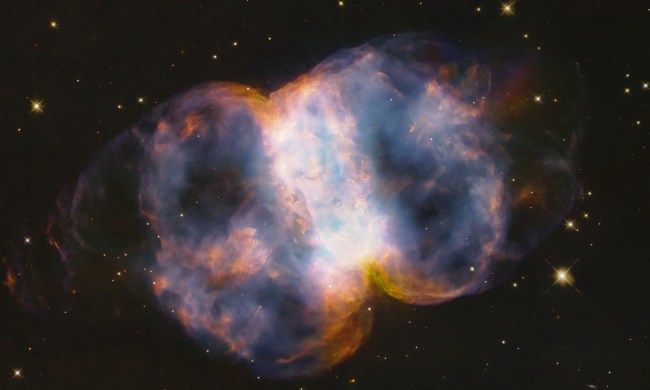Another week, another beautiful image of space captured by the Hubble Space Telescope. This week’s image shows the globular cluster NGC 6717, located over 20,000 light-years away in the constellation of Sagittarius.
A global cluster is a dense group of stars, often thousands or even millions of stars strong, which is bound together by gravity. The clusters form roughly spherical shapes and mostly consist of less massive stars, each one typically less than the mass of our sun. As you can see in the image below, the stars are packed closer together nearer the center of the cluster and are more spaced out around its edges.

As well as the globular cluster, you can see a few very bright stars shining out near the center of the image. These stars aren’t actually a part of the cluster, but rather are located between it and Earth.
Studying globular clusters is important to astronomers because they are some of the oldest objects in the universe, so looking at them can reveal how early stars and galaxies formed. However, imaging this globular cluster was a challenge because of where it is located. The constellation of Sagittarius is located in the same portion of the sky as the center of the Milky Way, where many stars in our galaxy shine brightly. The center of our galaxy is also full of dust and gas which absorb light and obscure the view behind it.
To capture this image through the dust and gas, Hubble used two of its instruments in combination: The Wide Field Camera 3 and the Advanced Camera for Surveys.



